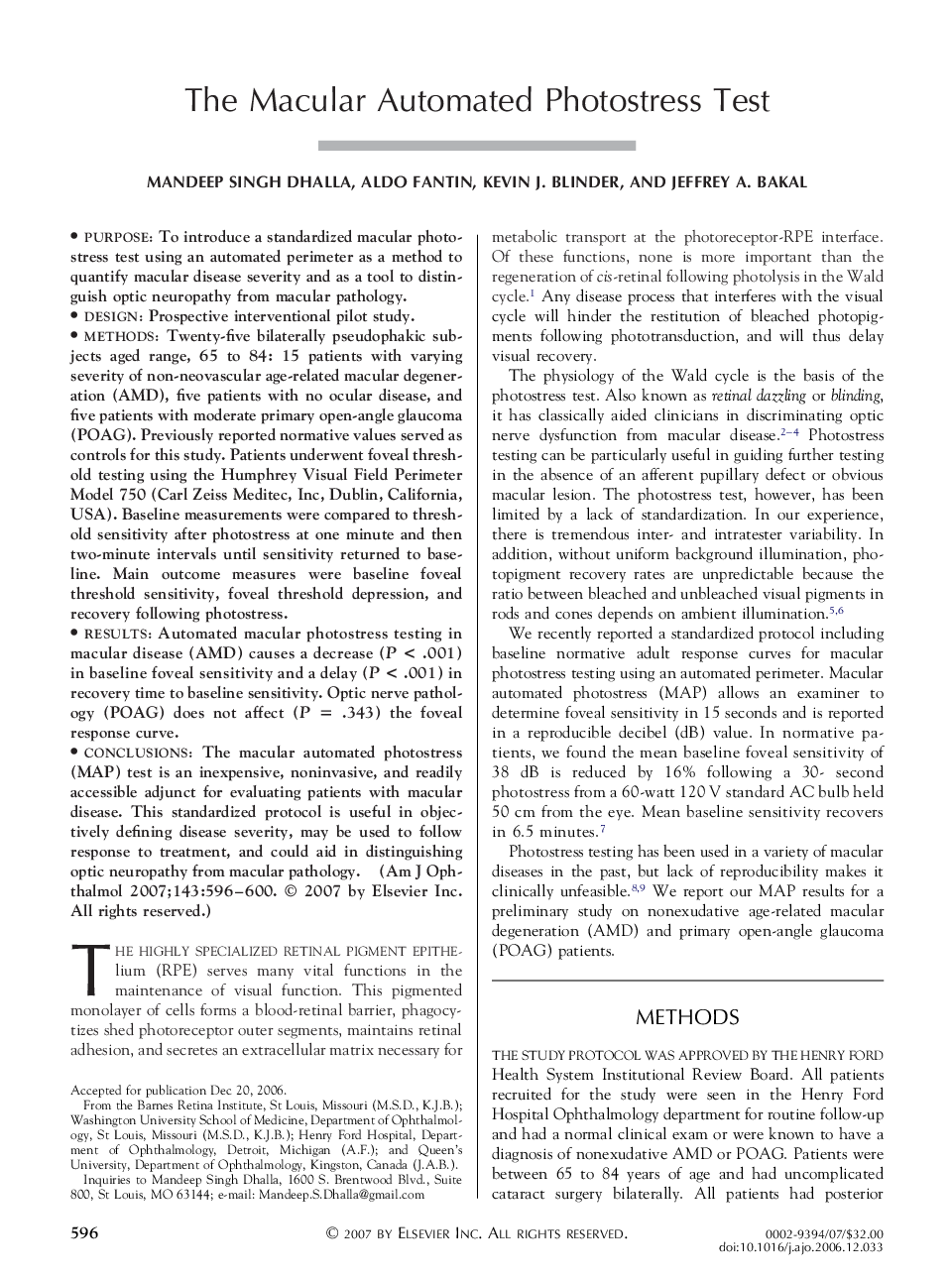| Article ID | Journal | Published Year | Pages | File Type |
|---|---|---|---|---|
| 4006337 | American Journal of Ophthalmology | 2007 | 5 Pages |
PurposeTo introduce a standardized macular photostress test using an automated perimeter as a method to quantify macular disease severity and as a tool to distinguish optic neuropathy from macular pathology.DesignProspective interventional pilot study.MethodsTwenty-five bilaterally pseudophakic subjects aged range, 65 to 84: 15 patients with varying severity of non-neovascular age-related macular degeneration (AMD), five patients with no ocular disease, and five patients with moderate primary open-angle glaucoma (POAG). Previously reported normative values served as controls for this study. Patients underwent foveal threshold testing using the Humphrey Visual Field Perimeter Model 750 (Carl Zeiss Meditec, Inc, Dublin, California, USA). Baseline measurements were compared to threshold sensitivity after photostress at one minute and then two-minute intervals until sensitivity returned to baseline. Main outcome measures were baseline foveal threshold sensitivity, foveal threshold depression, and recovery following photostress.ResultsAutomated macular photostress testing in macular disease (AMD) causes a decrease (P < .001) in baseline foveal sensitivity and a delay (P < .001) in recovery time to baseline sensitivity. Optic nerve pathology (POAG) does not affect (P = .343) the foveal response curve.ConclusionsThe macular automated photostress (MAP) test is an inexpensive, noninvasive, and readily accessible adjunct for evaluating patients with macular disease. This standardized protocol is useful in objectively defining disease severity, may be used to follow response to treatment, and could aid in distinguishing optic neuropathy from macular pathology.
